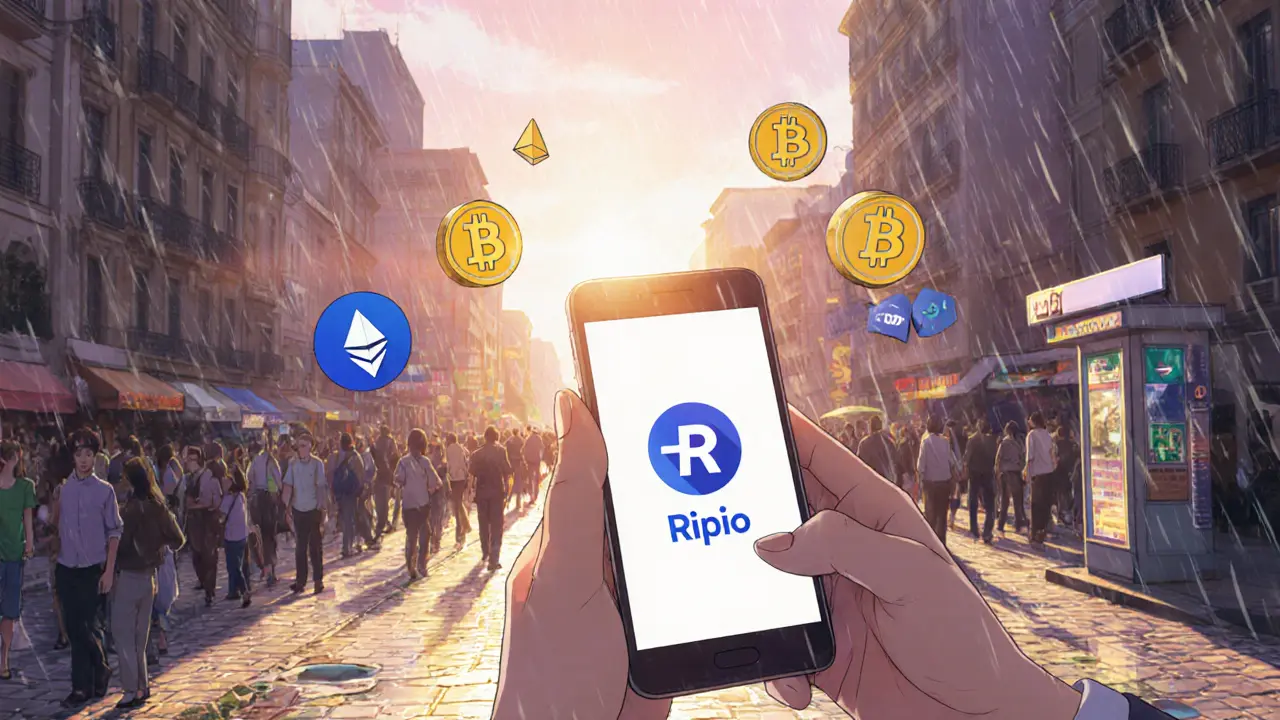Ripio Crypto Visa Card – Complete Guide and Latest Insights
When working with Ripio Crypto Visa Card, a crypto‑backed Visa payment card that lets you spend digital assets at any merchant that accepts Visa. Also known as Ripio Visa, it bridges blockchain wallets with traditional payment networks, turning crypto balance into fiat instantly at checkout.
At its core, the card is a type of crypto debit card, a payment card linked to a digital wallet that converts crypto to fiat on the point of sale. This means you don’t need to pre‑load fiat; the card pulls the needed amount from your crypto holdings, swaps it on the fly, and pays the merchant in the local currency. The conversion happens through the Visa network, the global payment infrastructure that processes billions of transactions daily, ensuring the card works anywhere Visa is accepted.
The service runs on the Ripio platform, a crypto brokerage and wallet provider that offers buying, selling, and storage of digital assets. Ripio handles the on‑chain to off‑chain conversion, custody, and compliance, so users get a regulated way to use their crypto in everyday life. Because Ripio is licensed in multiple jurisdictions, the card benefits from KYC/AML procedures that keep the ecosystem trustworthy.
Key Features and How They Connect
Understanding the card’s benefits starts with three semantic links: the Ripio Crypto Visa Card encompasses a crypto debit card model, it requires the Visa network for global acceptance, and it leverages the Ripio platform for secure asset management. These relationships make the card a practical bridge between decentralized finance and traditional commerce.
Fees are transparent: a modest issuance cost, a small monthly maintenance fee, and a conversion spread that varies with market conditions. Users can lock in a preferred spread when converting large amounts, reducing volatility risk. Security combines Visa’s tokenization with Ripio’s multi‑signature wallet, meaning your private keys never leave the platform, and card data is encrypted at every step.
Eligibility is straightforward. After completing KYC on the Ripio app, you can request the card, link your crypto wallet, and set spending limits. The app lets you monitor real‑time balances, view transaction history, and freeze the card with a tap—useful if you suspect fraud.
From a user experience perspective, the card works like any other debit card. You can tap, swipe, or use contactless payments. Offline transactions are supported when the network can’t reach the server, relying on a cached balance that updates once connectivity returns.
For frequent travelers, the Visa network’s multi‑currency support eliminates the need to carry cash. The card automatically selects the local fiat, and Ripio’s backend performs the conversion at the best available rate, often beating traditional exchange services.
Developers and crypto enthusiasts appreciate the API access Ripio provides. You can programmatically check balance, trigger automatic top‑ups, or integrate the card into merchant platforms, expanding the card’s utility beyond personal spending.
Overall, the Ripio Crypto Visa Card fits into a broader ecosystem of crypto payments, alongside other cards from competitors but distinguished by its deep integration with a regulated broker‑dealer and the robustness of Visa’s worldwide acceptance. Whether you’re new to crypto or a seasoned trader, the card offers a frictionless way to spend without converting everything to fiat first.
Below you’ll find a curated selection of articles that dig deeper into specific aspects of the card—fees breakdowns, security audits, comparison with other crypto debit cards, and real‑world user experiences. Dive into the list to get actionable insights and stay ahead in the fast‑moving world of crypto‑enabled payments.
